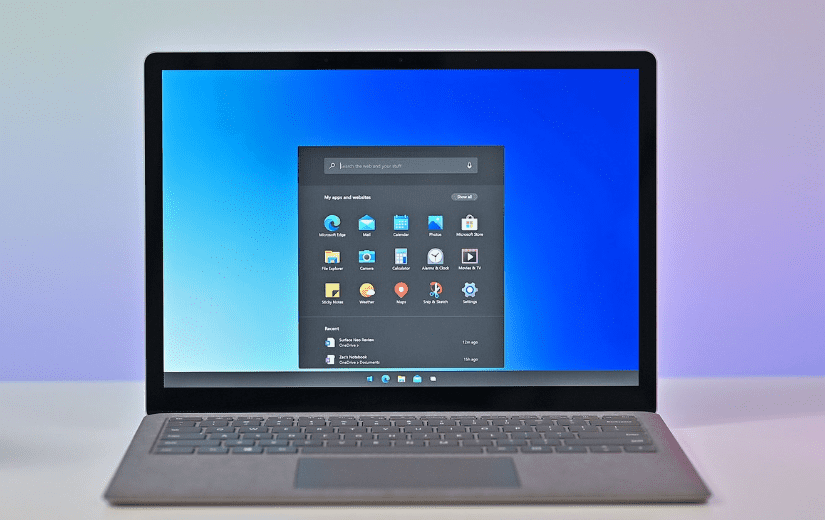When we first started hearing about Windows 10X (codenamed Santorini at the time,) it was clear that this new, modern version of Windows was going to be quite different from the Windows 10 we know and love. It was positioned internally as a lightweight OS for mobile PCs, including laptops, 2-in-1’s, and indeed foldable PCs. But when Microsoft officially announced Windows 10X in October, it positioned the platform as being exclusive to foldable PCs.
Microsoft did this as to set expectations for Windows 10X. Its entire user experience is new and different, and since Windows 10X is built on Windows Core OS, it’s also missing a lot of legacy features and components that some users may be accustomed to. Limiting Windows 10X to a new ecosystem of devices would’ve allowed Microsoft to set the stage appropriately and have users come into the platform with fresh eyes.
But now, new rumors suggest that Microsoft is shifting back to prioritizing Windows 10X for traditional form factors too. This is great news for early adopters who like the look of Windows 10X but aren’t entirely sold on the idea of foldable PCs. However, this shift also opens up Windows 10X to a whole new level of customer expectation that it previously didn’t need to worry about. If Windows 10X is launching on laptops, it needs to be good enough to replace Windows 10 on day one.
Another Windows RT?
If it’s not, then Windows 10X will end up as another “Windows RT” attempt that failed. Microsoft has backed itself into a corner by branding Windows 10X as a Windows product, as calling it Windows means people will expect it to do Windows things. While Windows 10X can do most of those Windows things, it certainly won’t be able to do all of them.
Perhaps that’s the balance Microsoft needs to find. Windows RT was a failure because it didn’t have the apps. Windows 10 S was a failure for the same reason. Windows 10X, in theory, shouldn’t have this problem nearly as badly, as it can run most legacy desktop applications, even if downloaded from outside the Microsoft Store.
If Microsoft can ensure that legacy app compatibility on Windows 10X is excellent and that the virtualization of those programs runs well, then for most people, Windows 10X should be good enough. That said, Windows 10X isn’t going to be for everyone, namely power users, gamers, and those who need access to legacy Windows components and features like the Control Panel or Windows Registry. Those things won’t be available to the user on Windows 10X.
Users will also need to learn the new Windows 10X interface, which is quite different from the Windows 10 interface we have today. It doesn’t have things like live tiles, or a system tray, or the ability to place icons on your desktop. It’s a stripped-back, streamlined experience designed with simplicity first and foremost.
That said, it’s not like Windows 10X doesn’t bring improvements to the table. I’d say the new user experience is a vast improvement over what we have on Windows 10, plus Windows 10X is more secure and has faster Windows Updates thanks to the locked-down nature of the platform. There’s a lot to like about Windows 10X. I’d even say it’s better than Windows 10. But users don’t care about that stuff; they care about whether it can do what they need it to do.
Issues with the Win32 container
I’m told that one of the reasons Microsoft has delayed Windows 10X into 2021 is so that it can further improve the Win32 container, which enables legacy app programs to run. There are issues with it right now, namely with programs that need to run in the background or share your screen. Microsoft Teams, for example, will stop alerting you of calls and notifications if you minimize the program. It also can’t share your display, as the program can only see the Win32 container, and not Windows 10X.
Microsoft Teams is just one example of a program that will likely have issues on Windows 10X if Microsoft doesn’t improve the Win32 container. I also heard that Microsoft was having overheating issues with Surface Neo prototypes, but that might simply be because things like drivers and firmware aren’t finished yet.
Either way, if Microsoft really is prioritizing Windows 10X for laptop and 2-in-1’s in addition to foldable and dual-screen PCs, then it needs to make sure Windows 10X is better than great on day one. It can’t launch “unfinished” with the promise of software updates to fix things down the line. It must be ready right out of the gate; otherwise, we’ll very quickly have another Windows RT on our hands.

